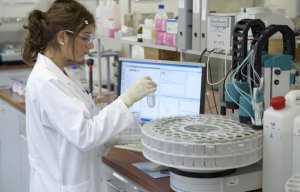
New Standard 100 by Oeko-Tex test criteria come into force
At the start of the year, the OEKO-TEX Association has, as usual, updated the valid test criteria and limit values for product certification in accordance with its OEKO-TEX Standard 100. The following new regulations have been provided with comment from OEKO-TEX and come into force on 1 April 2014 for all certifications, following a three-month transition period:

16th January 2014
Innovation in Textiles
|
Frankfurt
At the start of the year, the OEKO-TEX Association has, as usual, updated the valid test criteria and limit values for product certification in accordance with its OEKO-TEX Standard 100. The following new regulations have been provided with comment from OEKO-TEX and come into force on 1 April 2014 for all certifications, following a three-month transition period:
- Product class I: 50 µg/kg = 0.05 mg/kg (previously 0.10 mg/kg)
- Product class II: 100 µg/kg = 0.10 mg/kg (previously 0.25 mg/kg)
- Product class III: 100 µg/kg = 0.10 mg/kg (previously 0.25 mg/kg)
- Product class IV: 500 µg/kg = 0.50 mg/kg (previously 1.00 mg/kg)
With these two measures, OEKO-TEX is specifically supporting the "Zero Discharge of Hazardous Chemicals (ZDHC)" initiative of international brands and retailers that have committed to excluding hazardous chemicals from the production process by 2020.
Sum: NP + OP: 10.0 mg/kg (previously 50 mg/kg)
Sum: NP + NP(EO)1-20 + OP + OP(EO)1-20: 250.0 mg/kg (previously 500 mg/kg)
By reducing the limit values, OEKO-TEX is contributing to the complete exclusion of NP and OP as well as APEOs from textile production, striven for by the industry and also one of the goals of the ZDHC initiative and other campaigns. As a result of the globally introduced company audits as an element of every OEKO-TEX certification, all the companies participating in the OEKO-TEX system have also been made aware of these environmentally harmful, problematic substances in aids.
For more information on the new OEKO-TEX test criteria, please contact the OEKO-TEX Secretariat ([email protected] ) or the OEKO-TEX institutes and representative offices (www.oeko-tex.com/institutes ).

Business intelligence for the fibre, textiles and apparel industries: technologies, innovations, markets, investments, trade policy, sourcing, strategy...
Find out more